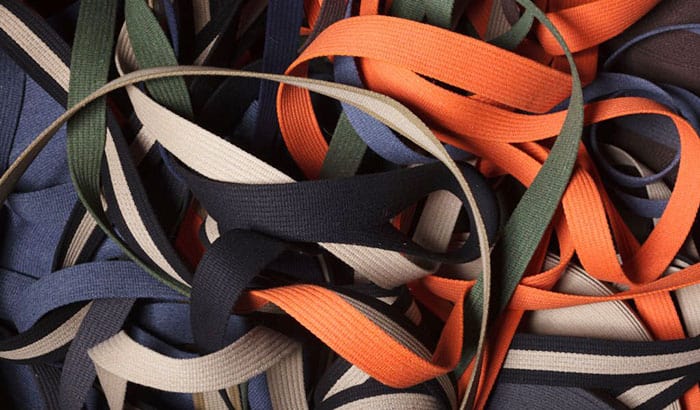There is no denying the importance of webbing as a primary tool when doing any climbing activity. Most climbers use it instead of the usual climbing rope due to its versatility and practical usage. Webbing has two types depending on how it is constructed. These two types are tubular webbing and flat webbing, and they are being compared because of their importance to the climber.
In every climber’s conversation, it is still debated which is better between the two. But for experienced climbers, tubular webbing makes a serious case of being better with all the advantages it can get during the climbing activity. Nevertheless, this article will compare tubular webbing vs flat webbing in different aspects and features.
| Features | Tubular Webbing | Flat Webbing |
| Strength | Stronger | Less Strong |
| Flexibility | Flexible and Pliable | Lacks Flexibility |
| Usage in Climbing | Various Applications | Limited |
| Climber’s Preference | Preferred Choice | Very Few |
Strength
There is no doubt that tubular webbing is stronger compared to flat webbing because of how both are constructed. The same flat webbing is weaker than a tubular webbing because of the additional material used in the construction.
While flat webbing can be strong, its strength will be inferior compared to a tubular webbing of the same size. The wrap-around webbing design in the tubular webbing will increase the strength of the tubular webbing, especially in actual usage. It is estimated that a tubular webbing with an inch of width can take up to 4000 pounds before breaking.
Tubular webbing is also different to flat webbing when it comes to flexibility. In fact, tubular webbing can be easily bent and has some softness in it. It has a pliable property that allows it to have more usage, especially when used in a climbing activity.
The tubular webbing’s pliability will make it glide better over rough surfaces during climbing. It can prevent the wear and tear that usually happens when navigating on edges and uneven surfaces. On the other hand, these rough surfaces can cause flat webbing damage and develop some wear after usage.
When a tubular webbing is pulled on one side or caught in an obstacle, it will take more friction compared to the other side. But since it has at least 4000 pounds of breaking, this situation should not be an issue.
Usage
You can also tell the difference between tubular webbing and flat webbing by its usefulness to the user. For flat webbing, it is typically used as anchor straps as it provides a strong and an easily-constructed anchor.
The only issue with flat webbing is its limited use because it does not hold knots well because of its flat design. This limited feature is completely the opposite of tubular webbing, which has enough flexibility to hold knots very well.
In fact, a one-inch tubular webbing is one of the most reliable tools that a rescuer can use during emergency situations. The flexibility of the tubular webbing will help in preventing damage, primarily when used on sharp ends.
The flat webbing is stiff, making it not conform to a corner. When making a sharp bend, what will happen is that the fibers on the inside part are in compression while the fibers on the outside are in tension. This situation will actually reduce the strength of the webbing. Tubular webbing is much better because of its flexibility to be used in various applications.
Climber’s Preference
The best thing about tubular webbing is that it can easily be used in joints, links, and other parts of the climbing gear, making it the go-to preference for climbers. Many outdoor practitioners like to use tubular webbing because it knots easily compared to flat webbing.
The flexibility and the softness make it hold better than the flat one. It also helps that tubular webbing can be used in other applications, making it popular with climbers. For an avid climber, tubular webbing is the standard.
The tubular webbing also makes it stronger compared to the flat webbing. This feature makes the climber safer and more protected. The softness and flexibility also help in making knots easier.
On the other hand, flat webbing can also have a purpose for a climber. In fact, it is typically used in replacing backpack straps, building your own rope ladder, or lashing down the gear. But flat webbing is not as preferred compared to tubular webbing by many climbers.
Other Applications
Apart from climbing usage, flat webbing and tubular webbing can also be used in other applications. It is available in different thicknesses, widths, and materials for flat webbing, which also provides its breaking strengths.
The flat webbing is often constructed into different products such as straps, seatbelts, and reinforced bindings. But the best usage for this type of webbing is when you are dealing with a stiff fabric.
Meanwhile, tubular webbing is generally thicker and more flexible compared to flat webbing. This feature will find tubular webbing in hoses, filters, and coverings. Since it is also less susceptible to wear and tear, you will discover tubular webbing in indoor climbing gyms and is used as safety harnesses and holding knots.
Conclusion
Comparing tubular webbing vs flat webbing will make you understand that both of these webbings can be used for climbing and other purposes. But each webbing type has different practical usage that anyone can maximize. For climbing, tubular webbing is preferred because of its strength and flexibility, allowing climbers to use it easily.


